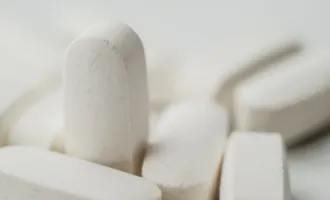
This Date in UCSF History: The Fascinating World of Forensic Medicine
Originally published in Synapse on November 6, 2003.
What comes to your mind when you hear the words “forensic medicine?” Murder, dismantled body parts, or DNA analysis? Whatever it is, one probably does not equate forensic medicine with two hours of amusing stories and laughter. But that was exactly what happened at Dr. Henry C. Lee’s talk, Forensic Evidence Found on Human Bodies — National and International Cases, which took place on Tuesday, October 21.
As former Commissioner for the Department of Public Safety, Chief Criminalist, and Director of the Connecticut State Police Forensic Science Laboratory in Meriden, CT, Lee has visited thousands of crime scenes and testified in numerous high-profile cases, most notably the O.J. Simpson case.
He has also assisted in the field of law enforcement for 3000 agencies around the world and was elected as Distinguished Fellow of the American Academy of Forensic Science in 1992. What one does not know from this impressive resume is that he is a flamboyant storyteller with a great sense of humor. In the jam-packed room, Lee started the lecture by interrupting his introducer’s high praise of him.
“Oh, come on,” he said and would not allow his friend to continue.
He then told story after story of different cases he handled, using them to illustrate the importance and advancement of forensic medicine.
When speaking about image-enhancement technique, he told the story of a hit-and-run that killed a police officer on an interstate highway. They stopped every single truck and finally found one with an obscure whitened area.
After image enhancement, the slide showed a police badge mark as clear as a stamp on white paper. The driver was indicted and the case solved.
When speaking about DNA fingerprinting, Lee told the story of a man who was sentenced to life for rape and murder based on the testimony of an eyewitness. After he had insisted on his innocence for 17 years, DNA analysis finally identified a different suspect and freed him.
Lee also talked about Elizabeth Smart, whose story appears in People magazine this month. Smart was kidnapped from her house in Salt Lake City and was missing for nine months before she was found with her kidnappers.
The police initially suspected Smart’s father because the entry/exit way to the mansion was thought to be a set-up. The police believed that the window screen was cut from the inside, and the stairs to the garden were too dangerous for the suspect to escape. However, Lee did not agree with the assumption.
“Before you call anything a theory, you must try it out first to see if it works,” Lee stated.
He experimented on trying to get into the house himself using the stairway, and he succeeded.
From experience and logical deduction, he then proposed that one of the suspects was a tall, slim male who was familiar with the house, possibly from working there before.
The suspects turned out to be just as he described.
Lee discussed his work in the O.J. Simpson trial, the massive graves in Bosnia, and the Clinton sex scandal. (“How many of you have seen a president’s semen? See how great forensic medicine is?” Lee asked.)
He also showed the eBay auction of the $1.95 ruler he used to testify in the O.J. Simpson trial, which was then sold for over $400.
He ended the talk with a series of international newspaper clips of himself. He had people guess what languages the papers were written in and gave out copies of the famous ruler to the lucky winners.
If nothing else, the audience learned one thing for sure – his grandchildren would have very interesting bedtime stories to amuse them. Lee’s talk was hosted by the Department of Laboratory Medicine and was a part of the Annual Grand Rounds Lecture series.



